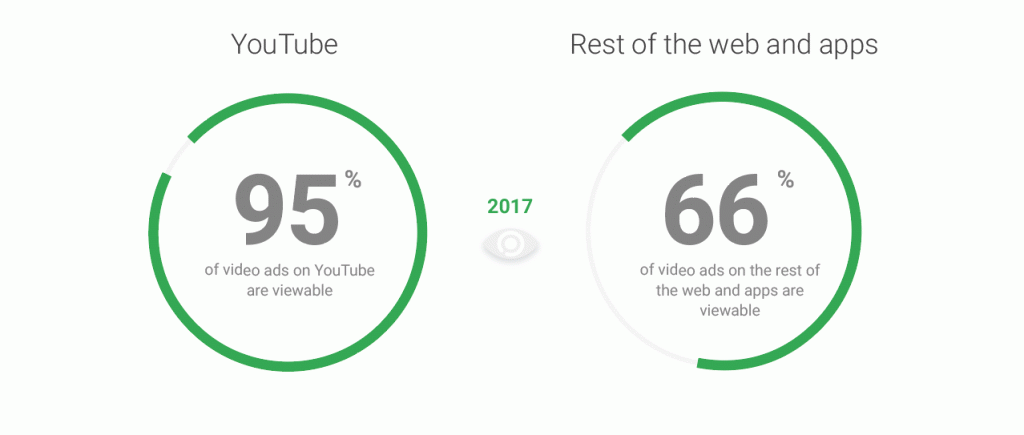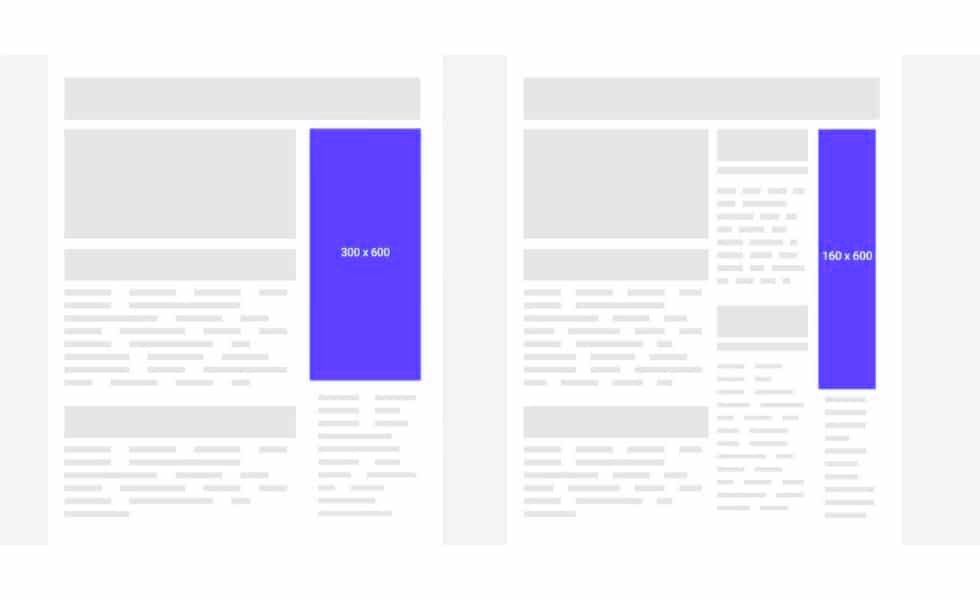Why is Ad Viewability Important?
When it comes to digital advertising, specific metrics determine the success or failure of an ad campaign.
One of those metrics is ad viewability. In this comprehensive guide, we will discuss core topics related to ad viewability and, most importantly, answer the question: why is ad viewability important?
What is Ad Viewability?
In simple words, ad viewability measures how visible your ads are to your target audience. But is this definition enough? Not exactly. For an ad to be considered viewable, there is a specific criterion it has to meet.
According to the Internet Advertising Bureau (IAB):
- A display ad is viewable if at least 50% of the ad is visible for at least 1 second,
- A video ad is viewable if at least 50% of it is visible for at least 2 seconds.
Viewability is an important metric that helps digital marketers and advertisers correctly evaluate the performance of their ads. It also helps them track the number of impressions their ad receives from users so that they can make changes to improve the effectiveness of their digital advertisements accordingly.
However, that is just one reason ad viewability is essential. Let us take an in-depth look at why ad viewability is so important.
Why is Ad Viewability Important?
To understand what makes ad viewability important for publishers and advertisers, let us look at the history.
Before 2011, it was the industry norm to measure served impressions. Publishers were paid for impressions rather than viewable impressions. But that changed when the collaboration of the American Association of Advertising Agencies and the Association of National Advertisers pushed for viewable impressions through various reforms. From that point onwards, the industry shifted to providing more revenue to viewable impressions than served impressions.
Publisher’s Perspective
Many publishers were not too happy with this change, as they felt that being paid only for viewable impressions will result in lesser revenue. In a couple of years, Google adopted this change too and implemented it on GDN(Google Display Network). Many intelligent publishers took this as an opportunity, positioned their inventory as premium viewable space, and demanded higher bids.
The fact that viewability is becoming a standard is something publishers have to make their peace with. Trends indicate a consistent rise in ad viewability(see the chart below). There is a fair chance that the highly viewable inventory will become more valuable with time as Viewable CPM(vCPM) replaces the traditional CPM.

The Advertiser’s Perspective
Ad viewability is vital from an advertiser’s perspective as well. If a user cannot view more than half of an ad, the ad campaign will take a hit. It will directly affect an advertiser’s potential to sell his product or service.
This is why many advertisers prefer bidding more on viewable ad space as it improves their ROAS(Return on Ad Spend). Moreover, most demand-side advertising platforms provide tools that help the advertisers target high-viewability inventory.
These facts indicate the industry’s shift towards viewability. Therefore, optimizing for ad viewability is the right way to make the best of your digital advertising campaigns and strategies.
What is the Ad Viewability Rate?
We have already discussed what it takes for an ad to be considered ‘viewable’ (see: what is ad viewability?).
Generally, ad viewability is measured through the ad viewability rate. This metric is calculated and verified with the help of ad viewability audit tools. This rate tells you how many ads are viewable on a particular page by the users, in contrast to how many ads have been served. It is usually measured in percentage.
To break it down, the viewability rate is measured as follows:
Viewability rate = (Viewable impressions/Measurable impressions) x 100.
Impressions that are ‘viewable’ according to the MRC standards are “viewable impressions,”while impressions that can be measured(served impressions) are “measurable impressions.”

Let us explain further with the help of an example.
Let’s say that the total number of measurable impressions on a particular page is 850,000, while the number of viewable impressions is 400,000. The ad viewability rate will be:
Viewability rate = 400,000 / 850,000 x 100 = 47% (approx.)
This rate indicates that out of the 100% ads on a page, users can view approximately 47% as per the MRC standards. The higher the ad viewability rate, the better the revenue for an advertiser.
Factors that Affect Ad Viewability
Appropriate Ad Placement
The position where an ad appears on the page is of great importance for ad viewability. Placing ads right above the fold increases ad viewability by a greater degree.
Here’s what Google Ad manager has to say about placing the ads right above the fold:
“Consider placing ads near the bottom of the screen (right above the fold). This placement has shown the highest viewability rates from our data. Ads placed just below the top navigation bar have a higher viewability rate than those placed at the very top of the page.”
Moreover, placing the ads below the fold results in a dramatic drop in ad viewability too.
Ad Size and Layout
Ad size and layout also determine how viewable your ads are. Generally, vertical layouts are the most viewable because they tend to stay on the screen for a longer scrolling distance.

For desktop, the most viewable ad dimensions are 300×600, 300×250, 728×90, and 970×250. And for mobile devices, the sizes 120×240, 240×400, 234×60, and 320×50 perform best in terms of viewability. Size 160×600 performs well on both mediums, but it is better to figure out ad sizes that perform best for you as the data keeps changing with time. Find more info in our article about the best display ads formats.
Page Load Times

Page load times affect various aspects of your website, and ad viewability is one of them.
The bounce rate(more on that later) is directly related to your page load times. If your visitors are bouncing quickly because of slow page loading time, they will not view the ads.
According to Google experts, your website should ideally load in under two to three seconds.
Publishing Platform
Your ad viewability changes depending on the publishing platform you choose to display your ads. For example, YouTube reports a higher ad viewability of video ads than other video streaming platforms.
Researching viewability rates of various digital online platforms is key to achieving higher ad viewability.
Page design
Cluttered page design can be overwhelming for many users, affecting your ad viewability rates. It is best to keep things minimalistic and simple to achieve an overall engaging design, ultimately resulting in better ad viewability.
Apart from taking care of things that can affect your ad viewability, there are certain steps you can take to optimize it. Here’s what they are.
Tips for Optimizing Ad Viewability
Taking Care of Core Web Vitals
Certain metrics, such as the First Input Delay, Largest Contentful Paint, and Cumulative Layout Shift, are collectively known as Core Web Vitals. According to Google, these metrics have the largest impact on user experience. Taking care of these vitals and improving them wherever necessary will increase your ad viewability. How?
Firstly, improving your Core Web Vitals will fix page speeds and minimize layout shifts. Layout shift refers to a phenomenon where a user’s position on a page shifts suddenly as the page loads. This increases the likelihood of your ad not being viewed by the user; reducing it has the opposite effect.
Secondly, Google announcedthat it would be releasing its core update in the following weeks on 25th May 2022. This core update will likely drive more traffic to websites with better-than-average core web vital scores.
In short, it is essential to always keep improving Core Web Vitals to optimize for a better ad viewability rate.
Optimising Header Bidding Stack
Over the past couple of years, header bidding has gained quite a traction among publishers. It promises higher revenues by letting the buyers bid on the ad inventory before a request is sent to an ad exchange. Here is a detailed article on what header bidding is.
However, the biggest downside of using header bidding is higher page latency, which negatively affects ad viewability. This problem is more pronounced in client-side header bidding. Even though server-side header bidding effectively deals with the latency problem, not all publishers can eliminate client-side header bidding entirely.
Therefore, to optimize client-side header bidding for low latency, publishers can implement things like:
- limiting the number of bidders,
- choosing a fast wrapper,
- using asynchronous loading,
- removing bidders that respond too late,
- and setting optimal auction timeouts.
Reducing Bounce Rate
Another useful optimization technique to improve ad viewability is to reduce bounce rates. Bounce rate is a vital webpage metric that measures the percentage of users who leave a website without engaging in any meaningful interaction. In simple words, it is the time it takes a user to lose interest in a website and move to another one.
The question is, why does that happen?
Apart from slow load times, high bounce rates can also indicate other underlying issues such as poor website design, subpar content quality, or slow page speed. A bounce rate higher than 70% suggests that users leave the page even before the ad has the time to load.
For ad viewability, bounce rates of:
- 25%-40% are good,
- 41%-55% are average, and
- 56%-70% are poor.
Consistently maintaining a low bounce rate is one way to optimize ad viewability.
Using Sticky Ads
Sticky ads, also called anchor ads, stick to the webpage and stay viewable even if the user scrolls around. These types of ads have reported higher viewability rates than most other ads.
However, there’s a catch:
Large sticky ads damage the user experience and are considered obstructive by industry standards. Therefore, using ads as an ad viewability optimization technique should only be used sparingly.
Lazy Loading
Lazy loading is an optimization technique that defers the loading of elements until they are in the field of view. It increases the page load speed and conserves bandwidth.
Applied to ads, lazy loading means that publishers allow only those ads to load first that are in view of the user. It works both on mobile and desktop and can improve ad viewability.
Final Word
As ad viewability gradually evolves into an industry standard, it becomes increasingly critical to learn how to use it to the best of your advantage.
With this guide, you’re all set to learn what ad viewability is, what makes it so important, and how to achieve high ad viewability in your ad campaigns.
Keep on visiting our blog for more informative and educational content on the ad tech industry.